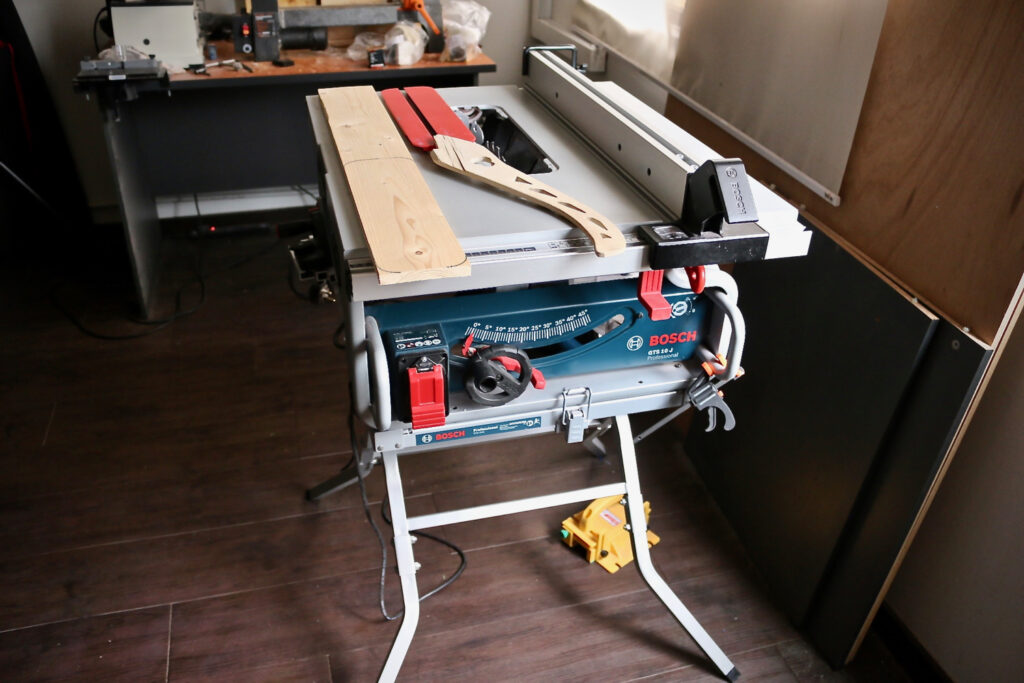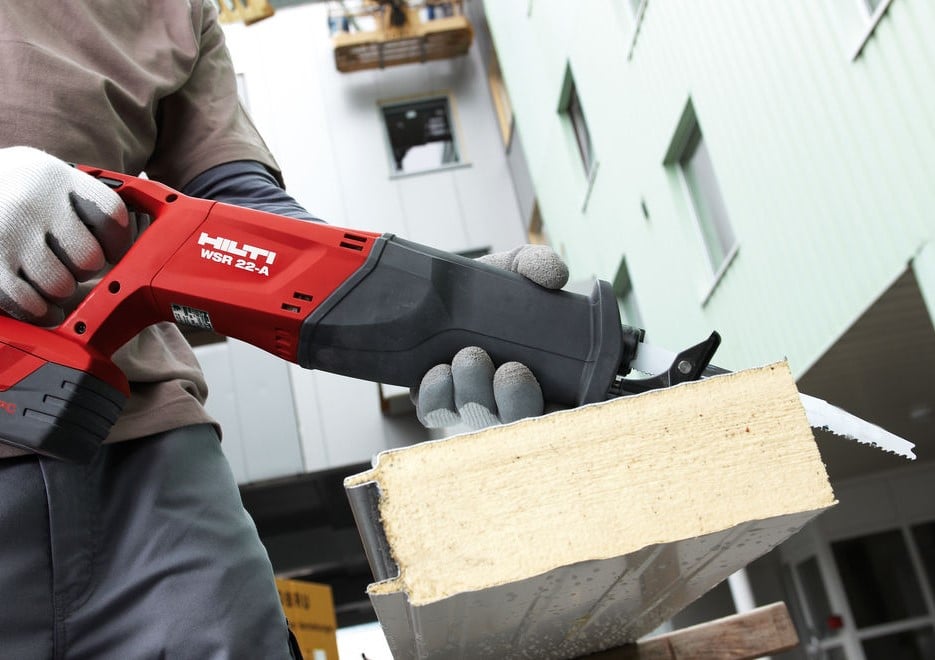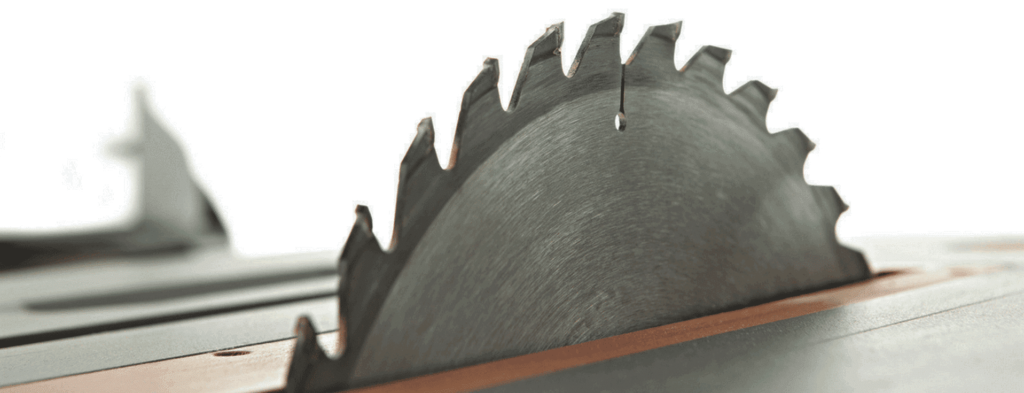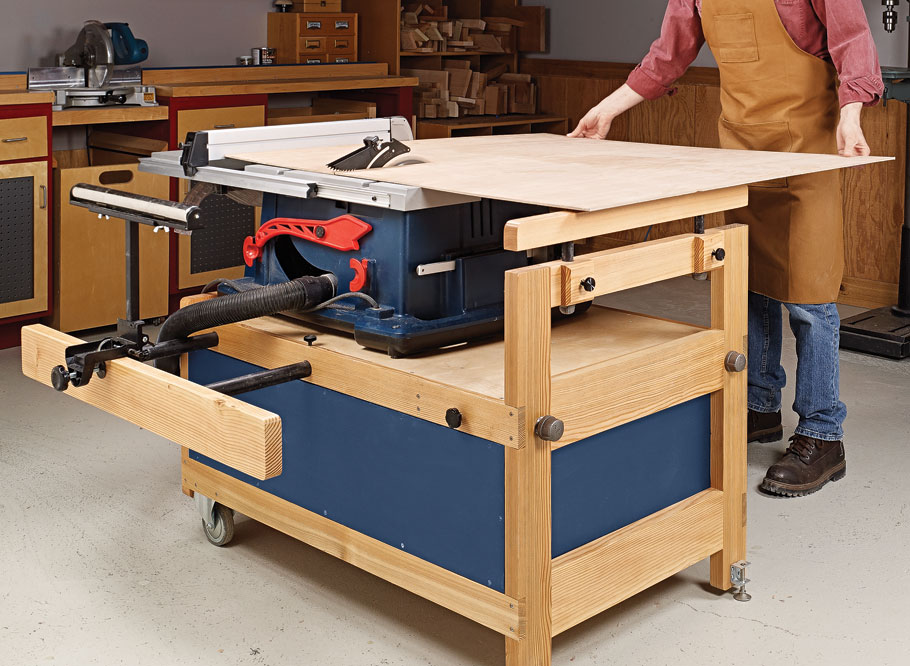World’s smallest functional circular saw measures just 0.3 x 0.4 x 0.3 inches and we have no idea what to cut with it. Tiny wooden shingles? What we want to focus on is the fact that even small saw is still sharp and dangerous. The right device won’t be a concern, but how can you be sure without testing? Well, you’ve got the brave wood-cutting us for the task.
We’ve spend many hours using 14 most promising tools to find 5 best compact circular saws with the top performing DEWALT DCS391B. If you like to receive quick results without hassle – we’ve chosen a speedy model. For woodworkers who have to struggle through thicker materials we’ve picked powerful tools with sturdy exterior. We’ll also show you budget-friendly options that perform like high-end models. Read on to see them all!
More features: rubber overmolded comfort grip, magnesium shoe
This compact circular saw from Dewalt combines the best of portability, power, and comfort to make it the ideal choice for those in need of an all-around workhorse. The saw measures just 15.25 inches across, which means it doesn’t take up much space in your shop and, at only 7.1 pounds, is relatively easy to transport to the field. Plus, this saw is cordless and runs on batteries to improve portability. However, the reason it is not the smallest or lightest saw that we reviewed is that Dewalt equipped it with a powerful 20-watt motor that allows it to smoothly cut through nearly any material. The 5,250-rpm blade and 6.5-inch blade diameter make this one of the most versatile circular saws on the market today and users find that it can easily handle whatever you throw at it.
The main issue that users had with this saw was the battery life, which is relatively short because of the power draw of the saw on the batteries. Users recommend opting for 4 or 5 Ah batteries to use with this saw and recommend purchasing multiple batteries if you will be using the saw for extended periods.
Another advantage to the Dewalt circular saw is its construction. The shoe is made from a high strength magnesium alloy that would bend or buckle over time, meaning that your cuts will be accurate over the entire – long – lifetime of the tool. Plus, Dewalt paid special attention to the grip to make it comfortable for extended use by fitting it with an over-molded rubber comfort grip. Users found that not only did this make the saw easy to handle, but it also improved balance when making cuts.
More features: built-in laser guide, dust extraction adapter
This corded compact circular saw from Rockwell is amazingly light at only four pounds. Users couldn’t believe how easy the saw was to wield for extended periods and didn’t think twice about throwing it in their tool bags when heading into the field thanks to its low weight.
Note that the low weight is made possible in part by the small blade on this saw, which is only 3-3/8-inches in diameter. This translates to a 1-11/16-inch maximum cutting depth, so this is not the saw you’ll want to turn to when cutting through thick pieces of wood or metal. However, users found that the 3,500-rpm blade speed was fast enough and the saw’s motor powerful enough to slice through thin pieces of hardwood with ease. Plus, the saw is equipped with a laser guide that makes it simple to achieve precise cuts every time and a dust extraction adapter that helps to reduce the amount of sawdust blown around by this saw.
Users found two primary issues with this saw that can further limit its utility as an all-around saw if you are looking to have only one circular saw in your toolbox. The first is that the spring on the blade guard is somewhat tough so that you have to push surprisingly hard to make it retract for a cut. The second is that the saw is not capable of making bevel cuts – a much more significant issue for any serious woodworkers interested in making complex joints.
More features: heavy gauge aluminum wraparound, built-in dust blower
This corded saw from Makita leads the pack of compact circular saws when it comes to power and blade diameter. The 15-amp motor is so powerful that it is able to drive the large 7-1/4-inch blade at speeds of 5,800-rpm, which users found was more than enough to cut through any type of wood and even thick sheets of metal without an issue. The other advantage to the large-diameter blade is that this saw has the largest maximum depth of cut of any of the saws that we reviewed, at 2-3/8 inches. However, note that the combination of the cord and high weight of this saw make it significantly less portable than competing compact circular saws and that the saw can weigh on your arms if you plan on using it for extended periods.
Part of the added weight of this saw comes from the heavy gauge aluminum wraparound shoe, which is highly durable and will extend the life of the saw while keeping your cuts precise. The saw is able to bevel to up to 45 degrees, making it a versatile tool for your woodworking projects. Most of all, users loved the two LED lights on the front to illuminate the material you are working on and the built-in dust blower that clears the area ahead of the saw of dust so that you can see any guidelines you have drawn onto the material.
Despite the robustness of the saw, one drawback is that Makita only offers a one-year warranty on their product.
More features: electronic brakes
Don’t let the budget price of this compact circular saw from Milwaukee fool you – it packs many of the same features as the more expensive saws. The main difference between this and other saws is the weight to size ratio – although this is one of the more compact saws in our list, it weighs a whopping nine pounds. While some users using the saw for extended periods would have preferred a lighter saw that is less tiring on the arms, most casual users will be happy to add the extra weight for the budget price and extra power this saw provides.
Despite its small size, this saw is able to power a 6.5-inch blade up to 3,500 rpm even while running on batteries rather than an electric cable. Users also did not report complaints about the battery life, although as for most cordless saws they recommend purchasing a second battery. The 2-1/8-inch depth of cut is very good compared to similar compact saws, and users appreciated that the 45-degree bevel on the blade allows them to use this saw for a much wider variety of tasks. While some users wished for advanced features like a laser sighting or LED light on the front of the saw, the lack of these high-end features at this price point is not surprising.
Milwaukee further adds value and sets this saw apart by offering a five-year warranty, the longest among the compact circular saws that we reviewed.
More features: dust extraction port, optimized grip diameter
For small projects that require an acute amount of force, there is no tool better than this miniature circular saw from Dremel. The corded saw focuses all of its power on a small three-inch diameter blade, which provides just a ¾-inch depth of cut. However, that small blade spins at 17,000 rpm – fast enough to cut through not only wood, but metal bolts, tile, and masonry as if it were nothing. While users noted that they would not keep this as their primary circular saw for woodworking projects because of the limited depth of cut, almost all recommended it as a second tool in your workshop that is invaluable when you need it.
The design of the blade itself is versatile in that Dremel left a secondary space to place the blade on the outside of the tool so that you can use it for straight cutting, as you would most circular saws, as well as plunge and flush cutting for specialized applications. The saw has an integrated dust extraction port so that it doesn’t clog up with sawdust, which users found worked effectively. Plus, Dremel optimized the grip diameter so that the tool is comfortable to hold when working with it for long periods.
The saw comes with five blades and a hard-sided case for transport, increasing the value of the bundle. Plus, Dremel offers a two-year warranty on their saw to provide peace of mind for your purchase.
There are a number of advantages to buying a compact, hand-held circular saw rather than a full-sized circular saw. First, for anyone with a small workspace or garage, the reduced size is a major advantage in itself since the tool won’t take up all of your available space. The smaller size and light weight also make the tool easier to transport if you need it for a job outside of your workspace – whether in the yard or at a field site. These small saws can also be easier, and thus safer, for many people to wield since they don’t tire out your arms as quickly as a full-sized saw.

Compact circular saws can be used to cut a huge variety of materials, although exactly what a specific saw can cut depends on its power and the blade you have attached. For starters, most circular saws can cut through any types of wood, but they can also cut through composites and thin metals. For best results, if you are cutting material other than wood you will want to invest in a blade that is specifically designed to cut through the material you are working with.
Using a saw of any type is inherently dangerous, so it’s always important to practice good saw safety. Be sure to wear eye protection and appropriate clothing to protect yourself from flying material and hearing protection to drown out the noise. A good safety practice whenever making cuts through an entire board is to set your depth of cut so that it extends no more than ¼-inch below the bottom of the board – there is no reason to have a ton of blade exposed under the board where it can cause damage to your body. Additionally, whenever you need to manually retract the blade guard for a cut, do it using your free hand rather than propping the blade guard open. Finally, be sure to keep your blades sharp and oiled with pitch to reduce the chance of your saw kicking during a cut.
While portable circular saws have a lot in common compared to full-sized circular saws, there are also a number of features that differentiate them and can make a big difference in what they can be used for cutting. Here, we’ll cover some of the most important features and explain how they affect your saw.
Size, along with weight, is one of the main factors determining how portable your compact circular saw will be. If you plan to transport your saw frequently or have a small shop, you may want to choose a small saw like the model from Dewalt DCS391B. Note, however, that smaller size usually also means less power for cutting.
Weight is a concern both for portability and for how tired your arm will be after using your saw for extended periods or long cuts. Typically, lower weight is better – but this often comes at the cost of a smaller, less powerful motor. In general, choose the lightest saw that has the other features you need to get your work done efficiently.
While size and weight are important for portability, they are often pitted against the available power of the saw – after all, a larger, more powerful motor adds space and weight. Power is important because it determines what types of materials your saw will be able to cut through and how quickly it will cut through them. Although compact circular saws typically have nowhere near the power of a full-size circular saw, if you work with difficult materials it may be worth the weight trade-off to opt for a more powerful saw like the model from Makita 5007F.
Whether or not you want to opt for a cordless or coded compact circular saw depends largely on how portable you need your saw to be and whether you’ll typically be working in places with electricity. For contractors who find themselves frequently working in field locations with only a generator or no electricity at all, it may be worth the added cost, reduced power, and limited battery lifespan that typically comes with a cordless saw.
Most circular saws, including all of the saws we reviewed, come with a standard carbide-tipped blade that serves as an all-purpose blade for cutting wood. However, there are a huge variety of blades out there that vary in quality and the type of material – metal, composites, and more – that they are designed to cut through. Upgrading your blade after you purchase a circular saw is one of the best additional investments you can make. The most common purchase is dado blade that is used for effective joints cutting.
The diameter of the blade makes a huge difference in the thickness of wood or other materials that your saw will be able to cut through. In general, the extra power of larger motors is used for spinning larger blades – which is why the powerful Makita 5007F saw has a 7-1/4-inch blade, the largest blade diameter of any of the saws we reviewed.
The speed of the blade is also important in determining how smoothly and efficiently your saw will cut. In general, a faster blade, like the 17,000-rpm Dremel SM20-02, will be less likely to experience kicking when cutting through difficult or knotty materials. However, these fast blades can also cause some burning when working with delicate pieces of wood.
The depth of cut describes the maximum depth into a material that you can sink the blade, effectively putting an upper limit on the thicknesses of materials that you can cut through in a single cut. Larger blades like the Dewalt DCS391B, Milwaukee M18 2630-20, and Makita 5007F models offer the largest depths of cut. Note also that these saws allow you to adjust the depth of cut so you can easily make precise cuts without freehanding the saw.
Making beveled cuts is a common application of circular saws. Some of the saws we reviewed, like the Dewalt DCS391B model, are designed to make it easy to angle the saw relative to the material you are cutting via bevel guides. Having the ability to bevel your saw makes a big difference in the number of applications you can use it for.
Don’t ignore the grip handle when choosing a compact circular saw, as having a comfortable grip can make all the difference between being able to wield the saw for hours at a time and wanting to put it down after just minutes of use. Saws like the Dewalt DCS391B and Dremel SM20-02 models paid special attention to the handles to make them comfortable by optimizing the grip diameter and adding a comfortable over-molding to the handle.
The voltage is a measure of how much electrical power the motor on your compact circular saw will draw and can be indicative of how powerful the saw is. Note that all of the drills that we reviewed are 120-volts or less, meaning that any of the corded models can be plugged into a standard wall outlet and do not require a shop outlet wired for 240 volts like some larger saws.
A portable circular saw is a significant investment in your toolbox, so you want to make sure that it will work for years to come. Many manufacturers offer warranties on their saws to provide peace of mind and back up their products, although these vary in length from short one-year warranties like found for the Makita 5007F saw to impressive five-year warranties like for the Milwaukee M18 2630-20 saw.
The second trick is that the blade bolt is typically left-handed so that spinning the blade tightens it on the bolt rather than loosens it – which would be dangerous! When you insert the blade wrench onto the bolt with the spindle lock button still depressed, you’ll want to turn clockwise instead of counter-clockwise as you would for most other applications.
Our overall favorite compact circular saws were the Dewalt DCS391B, the Rockwell RK3440K Versacut, and the Makita 5007F. These saws are all very different in the types of uses and budgets they are best for, but we felt that each of them exemplified their respective categories. The Rockwell RK3440K Versacut saw provides excellent excellent portability and it’s overall lightweight. It weighs just 4 pounds and offers a 3-3/8 inch blade diameter and a biult-in laser guide. The saw from Makita is not your everyday wood saw, it is more than enough to cut through any type of wood and even thick sheets of metal without an issue. We feel the Dewalt DCS391B saw is the overall best mini circular saw for all-around use thanks to its relatively large-diameter blade, cordless portability, and the overmolded comfort grip that makes it a pleasure to wield.
If you consider dealing with more difficult projects, try out different types of saws: cabinet table saw, contractor table saw, tile saw or even invest in a miter saw with a miter saw stand.





